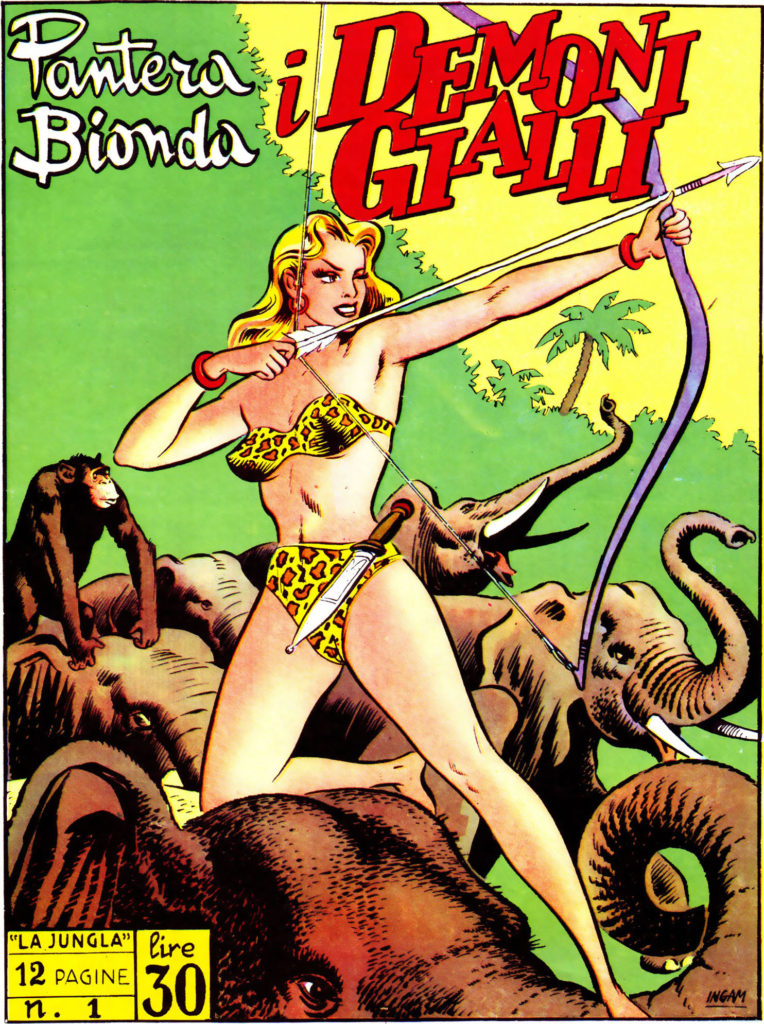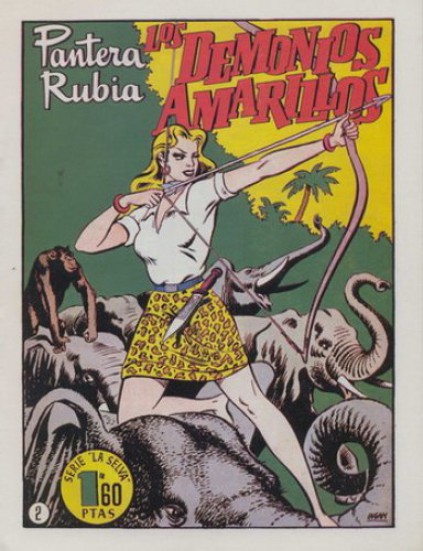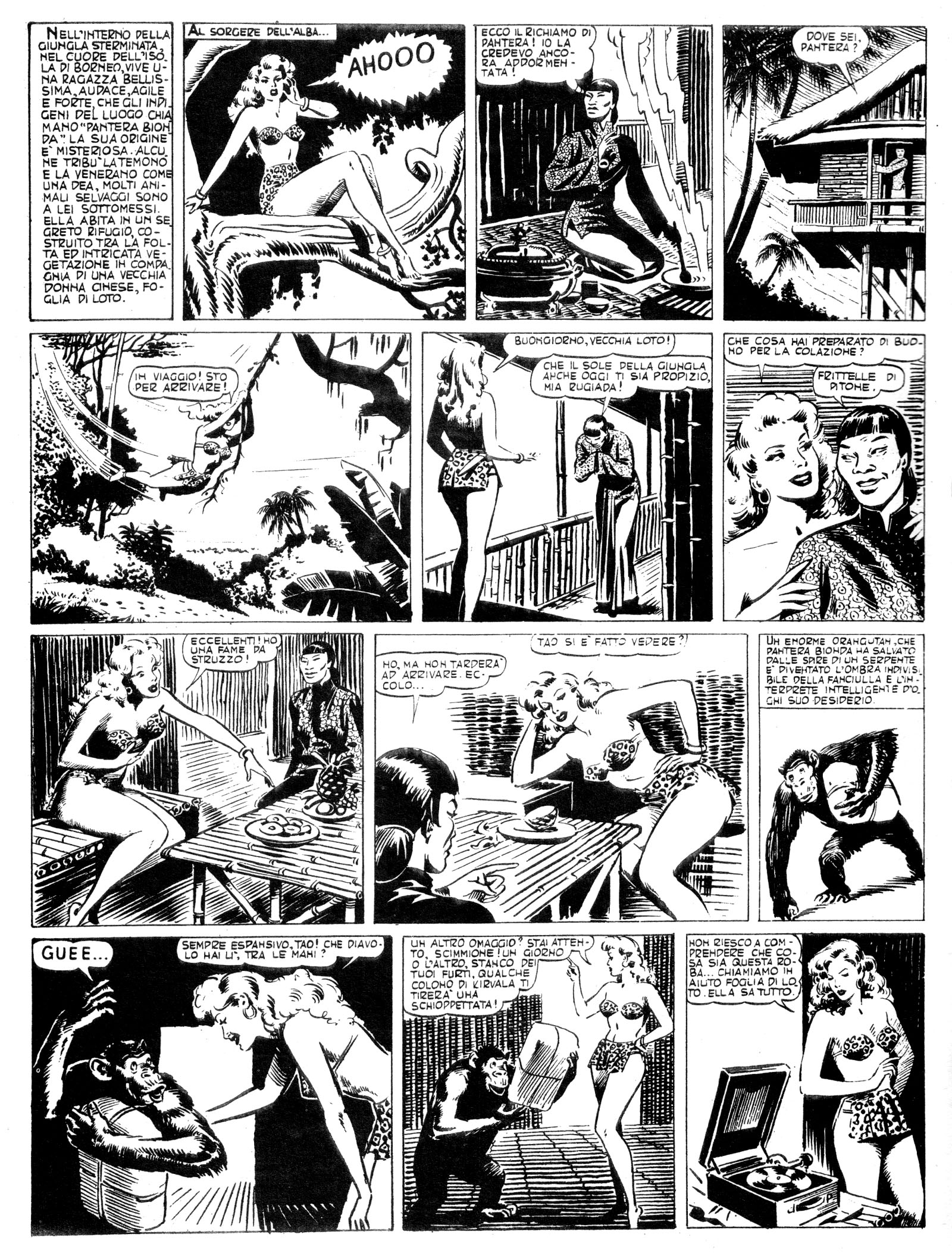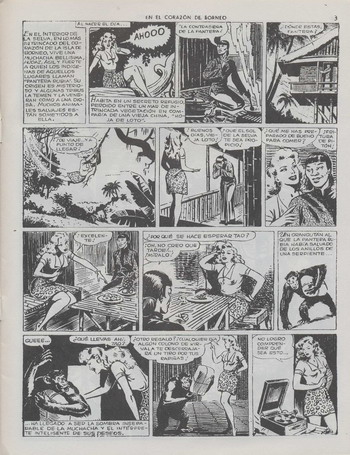La Pantera Bionda--The Blonde Panther--began her career in Italy in 1948. courtesy of writer Gian Giacomo Delmasso and artist Enzo Magni, who signed himself "Ingam." Pasquale Giurleo's Editrice Arc launched the comic as a twelve-page biweekly but sales were so good that six issues later it went weekly. "Good" is an understatement.
La Pantera Bionda sold in excess of 100,000 copies an issue. For postwar Italy this was an astonishing success. The jungle woman's adventures provided one-handed reading for countless adolescent Italian boys over the next two years. To meet the workload Magni used a host of assistants. Among them was newcomer Mario Cubbino, who specialized in drawing La Pantera's figure.
Here's the eye-catching cover of the first issue:

Teenage boys weren't the only ones who noticed
La Pantera Bionda. Almost immediately the guardians of decency, led by the Catholic church, declared the book a "threat to public morality." A series of lawsuits and judicial seizures plagued the publisher. The title was suspended briefly after issue 40. When it resumed publication Giurleo instituted a number of changes intended to placate the censors.
The censors had two primary complaints. First, obviously, was La Pantera's skimpy costume. But they were equally offended by the fact that La Pantera operated on an equal plane with men, overcame male antagonists single-handed, and showed undesirable "independent" behavior. Despite the content changes lawsuits and harassment continued. Pasquale Giurleo pulled the plug in mid-1950 after 108 issues. Fed up with the hassle, he decided to concentrate on educational comics in the future.
There was a brief series of reprints in 1954. Ten years later SEAT, which published mostly erotic comics, revived La Pantera with new stories provided by a Spanish studio. The series raised little interest.
La Pantera Bionda's WardrobeAs we saw above, on her first issue cover La Pantera wore a skimpy bikini. However inside she wore a two-piece outfit reminiscent of that worn by Maureen O'Sullivan in
Tarzan and His Mate. This comprised a bikini-style top and a breechcloth which in profile exposed skin from top to toe. Somehow the flaps defied gravity and protected La Pantera's modesty even when she was upside-down.

After the hiatus her breechcloth became a short skirt:

Even that wasn't enough coverage. Eventually La Pantera sported a single-piece dress with shoulder straps and minimal cleavage. The hemline lengthened at least once.
 La Pantera Bionda
La Pantera Bionda was exported to Spain in 1949 as
La Pantera Rubia. Needless to say Francisco Franco's semi-fascist government, strongly supported by the Church, was not thrilled by the young lady's dress. When the comics hit the stands La Pantera was sporting a conservative two-piece ensemble with a white blouse and a spotted skirt that changed size and length as necessary to protect the poor girl's virtue.

The Spanish series ran 45 issues with one "special," ending in 1952. Here is a copy of the opening page of the first Italian issue followed by a regrettably-small reproduction of the Spanish version:


 Author
Topic: La Pantera Bionda (alias L. P. Rubia): A Brief Bio (Read 1567 times)
Author
Topic: La Pantera Bionda (alias L. P. Rubia): A Brief Bio (Read 1567 times)


